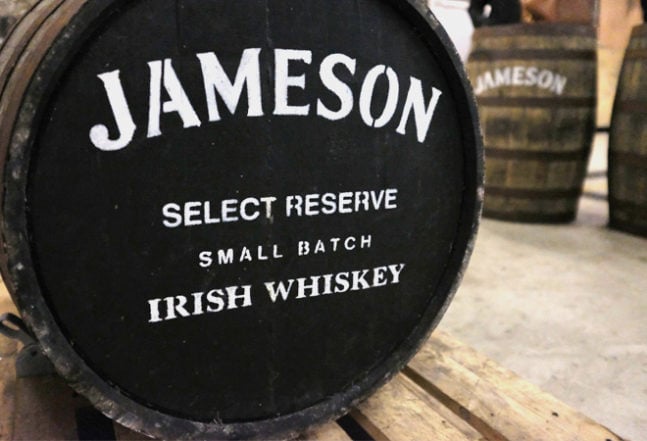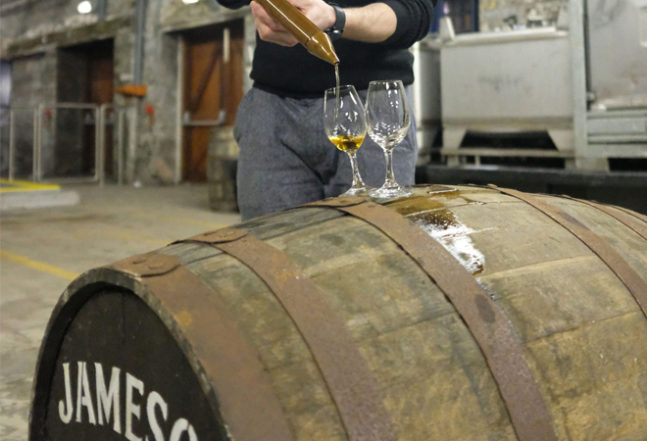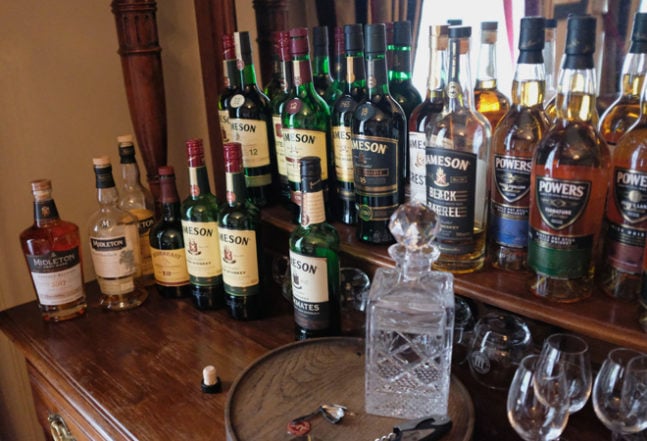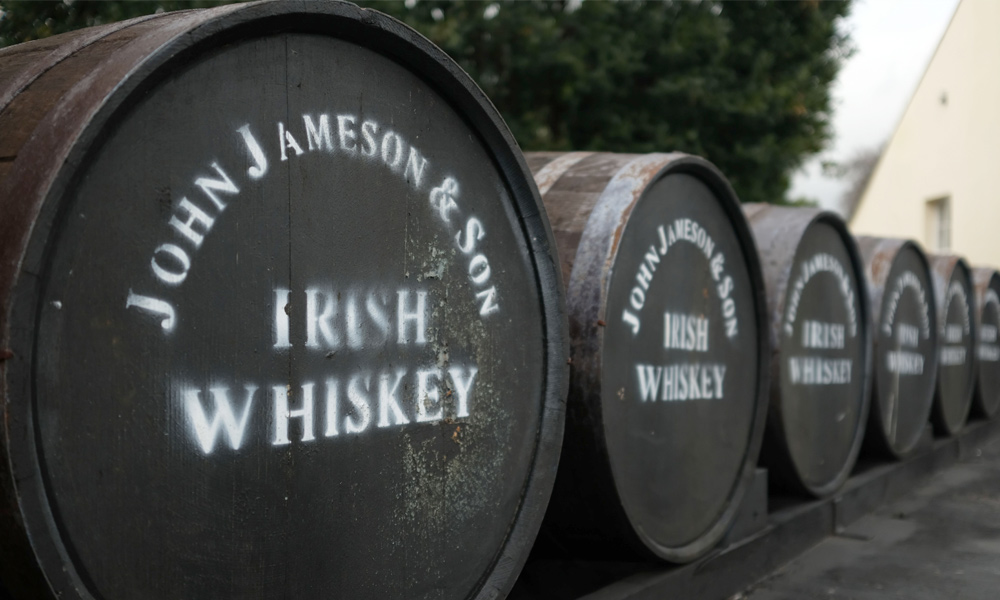If you line up a room of people with varying levels of whiskey knowledge and ask them to name one brand, there’s a good chance Jameson whiskey is going to come up more than once. When people in the United States have their first shot of Irish whiskey, there’s a very good chance it’s Jameson. It’s no secret that it’s the best-selling Irish whiskey in the world. But how much do you really know about the legendary spirit?
Jameson whiskey traces its rich history back to 1780 in Dublin, Ireland. This iconic Irish whiskey is renowned for its unique triple-distillation process, resulting in a smooth and flavorful taste. Crafted using a blend of malted and unmalted barley, Jameson whiskey possesses a distinctive character that sets it apart from other spirits.
We were out at the Midleton Distillery and spoke to Irish Distillers’ archivist Carol Quinn about some of the lesser known things about our beloved Jame-O. Here are nine facts you probably didn’t know about Jameson Irish Whiskey.

Early on, Jameson sold its whiskey in bulk, rather than in bottles
The distillery relied on bartenders to go back to their bars and fill up in their own bottles. As it happens, the bottling process in the early days was very expensive. Rather than suck up limited resources on bottling, John Jameson and Co. would distill the stuff, ship it in casks, and then rely on bar owners to fill bottles—which they also provided labels for—with the proper liquid. And even though Jameson would require each bar owner to sign an annual agreement, the system was very easy to beat. Believe it or not, this happened all the way up until 1963, when Jameson decided to take definitive control of the quality of their spirit and bottle their booze in-house.
The original Jameson came from Scotland, not Ireland
John Jameson, the founder of Jameson Irish Whiskey, was born in Alloa, Scotland in 1740. The son of a lawyer, he moved to Ireland in the 1770s with his wife Margaret Haig, who herself came from a family of historic and renowned Scotch whisky distillers.

The Jameson Distillery on Bow Street Was Occupied by Rebels During the Easter Rising
The Easter Rising was an armed insurrection by Irish Republicans in April 1916 in order to liberate Ireland and its people from British rule. While the uprising was taking place, the Republican rebels “captured” Jameson’s distillery on Bow Street (which still stands today) for strategic reasons. Unfortunately, because of the brutal fighting that occurred, many of the rebel-owned “bases” were destroyed or heavily damaged. Nevertheless, the Bow Street distillery still hosts tens of thousands of visitors every single year.
Jameson is now owned by a French company
In 1988, Pernod Ricard, a French beverage company, acquired Irish Distillers, the company that owns Jameson Irish Whiskey. The acquisition was part of Pernod Ricard’s strategy to expand its portfolio of premium spirits brands. The purchase of Jameson whiskey was a major coup for Pernod Ricard. Jameson is the world’s best-selling Irish whiskey, and it has a strong following in both the U.S. and Europe. Since the acquisition, Pernod Ricard has invested heavily in Jameson. The company expanded the distillery in Midleton, County Cork, and it launched a number of new expressions of Jameson, including Jameson Black Barrel, Jameson Orange, and Jameson Caskmates.

Jameson was one of the only companies to pay their employees in full during the rebellion
Jameson is really thorough with its records. While going through the company’s incredibly detailed payroll accounts, Quinn stumbled upon the company’s statement for the week of April 24 through 29 during the rebellion, and it read: “All Employees Paid in Full.” Again, that might not sound like a big deal until you consider the context. At that point in history, in Ireland and elsewhere, if an employee didn’t show up for work for whatever reason, they weren’t paid. Rather than leave their employees high and dry during the rebellion, Jameson paid their workers everything they were owed, even for the downtime, which helped keep their families stayed fed, warm, and safe.
The Jameson motto on every bottle means “without fear”
The Jameson motto “Sine metu” (“without fear” in Latin) and the Jameson coat of arms is on the front of every bottle. Outlasting the centuries and staying open through historic upheavals like multiple world wars, a civil war, and Prohibition takes a lot of character and backbone.

Prohibition created a false impression of what Irish whiskey was
One of the biggest issues Irish whiskey faced during American Prohibition wasn’t necessarily that the stuff was banned, believe it or not. By that time, the brand had gone global, and had a dedicated following in countries all over the world. What Jameson did have a hard time dealing with was the aftermath. During prohibition, so many people tried to bootleg their bathtub imitations of Jameson (with label and all), that when Prohibition was finally over and people were allowed to buy the real stuff, they shied away from Jameson because they equated it to the swill to which they were accustomed.

90 percent of Jameson’s whiskey is exported
From an American’s perspective (especially when first stepping foot in Ireland), you fall under the impression that Jameson might actually be the number one export of the island. In every bar into which you walk, there seems to be a few empty shot glasses with the telltale remnants of a Jameson pour inside. But, believe it or not, exports account for over 90 percent of the company’s sales.

All of Jameson’s barley is locally sourced
The brand uses a healthy mix of malted and un-malted barley (which you probably know), but what you might not be aware of is just how serious they are about using local resources when possible. Their barley, for instance, is all sourced from Southern Ireland, from more than 200 local farmers within 50 miles of the Midleton Distillery. While their plots can be as large as 700 acres, they also work with farmers with barley plots as small as 15 acres.




